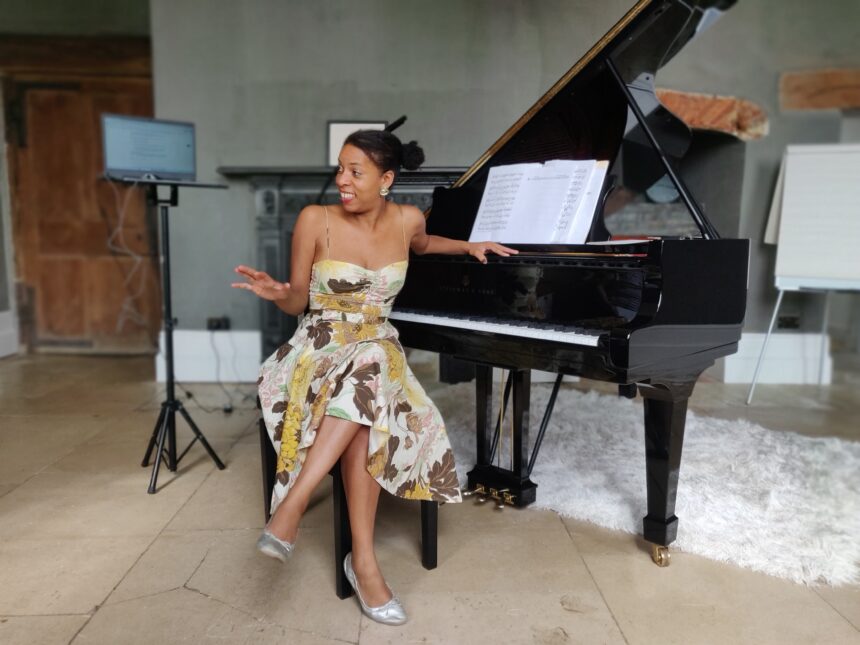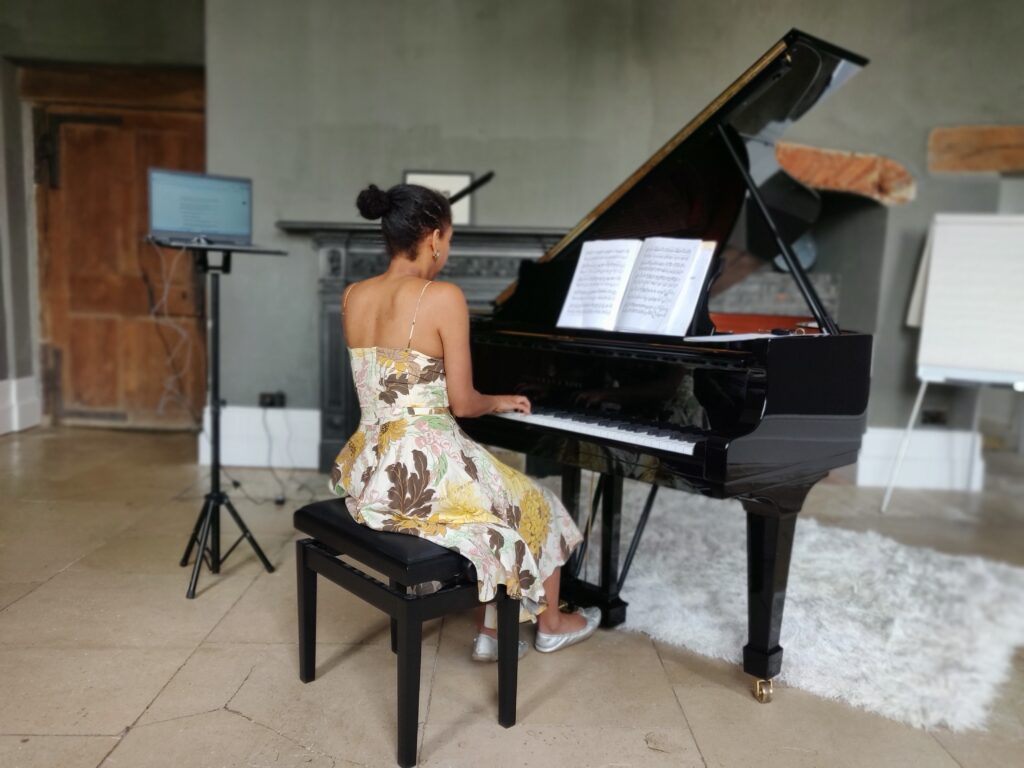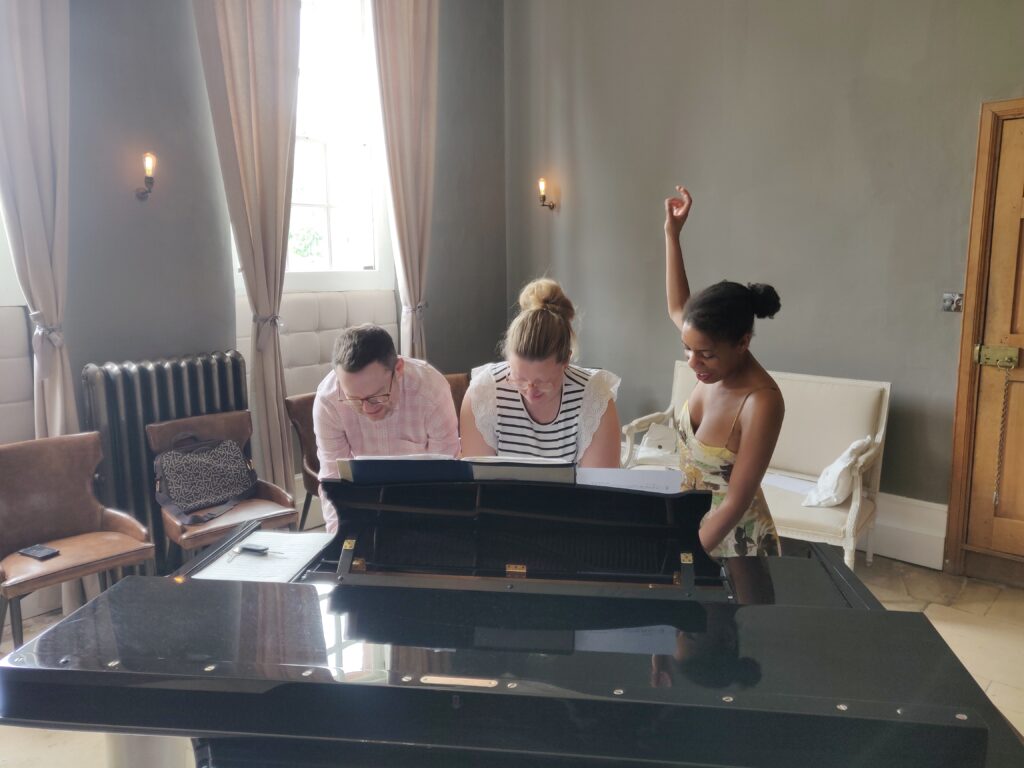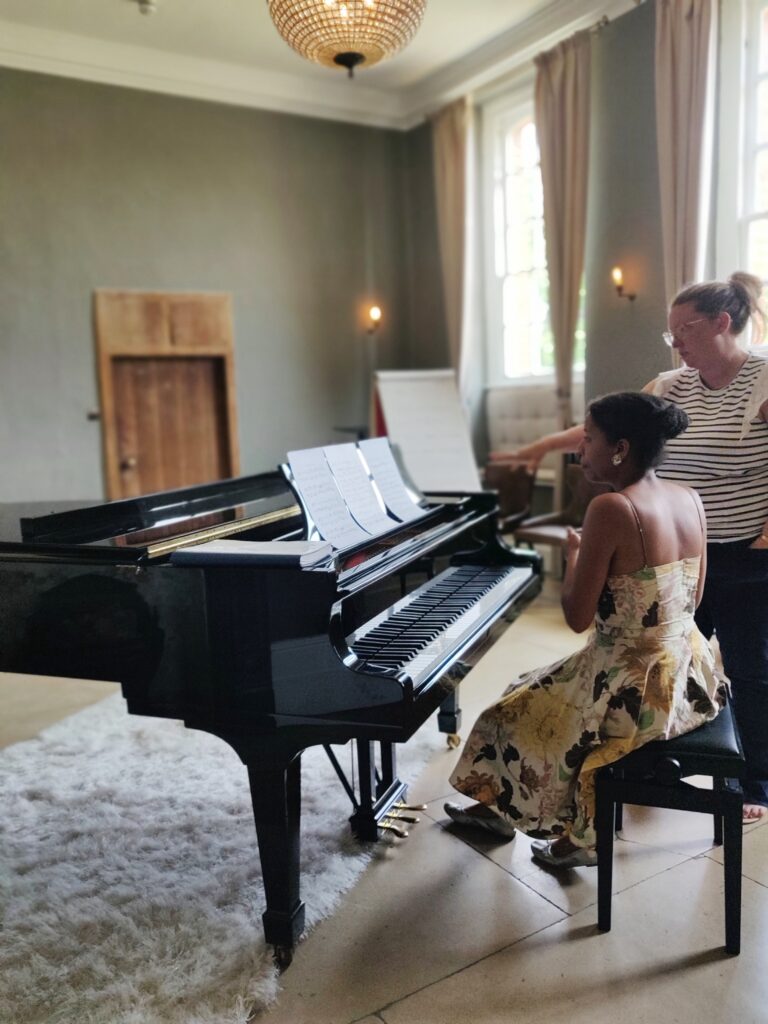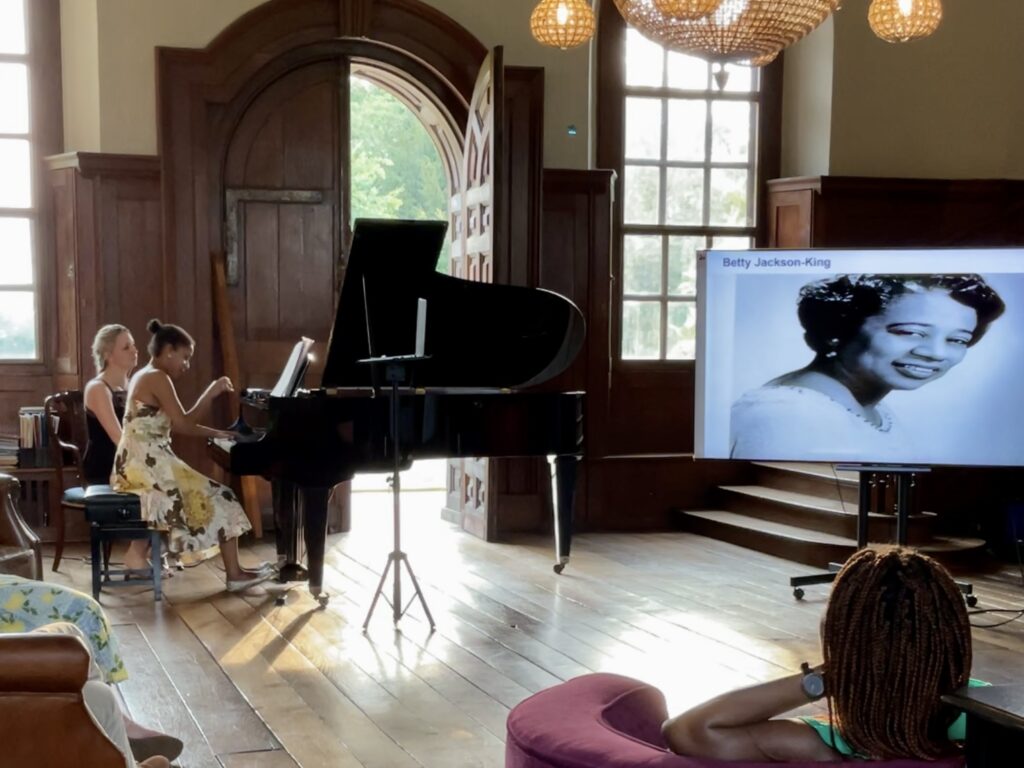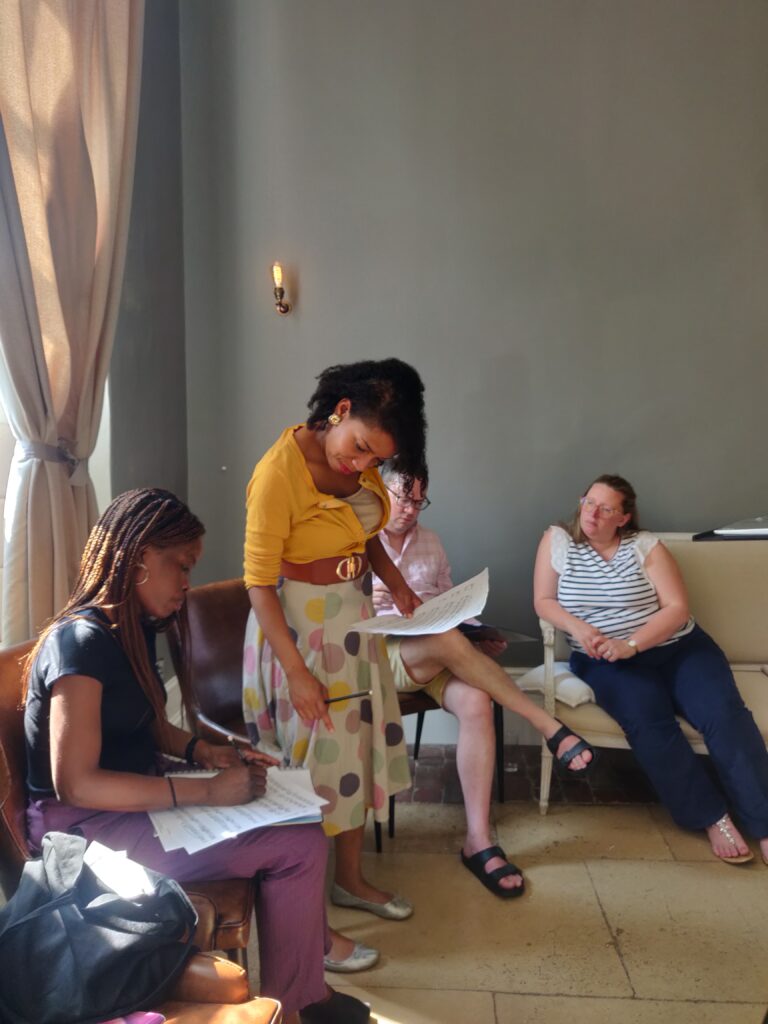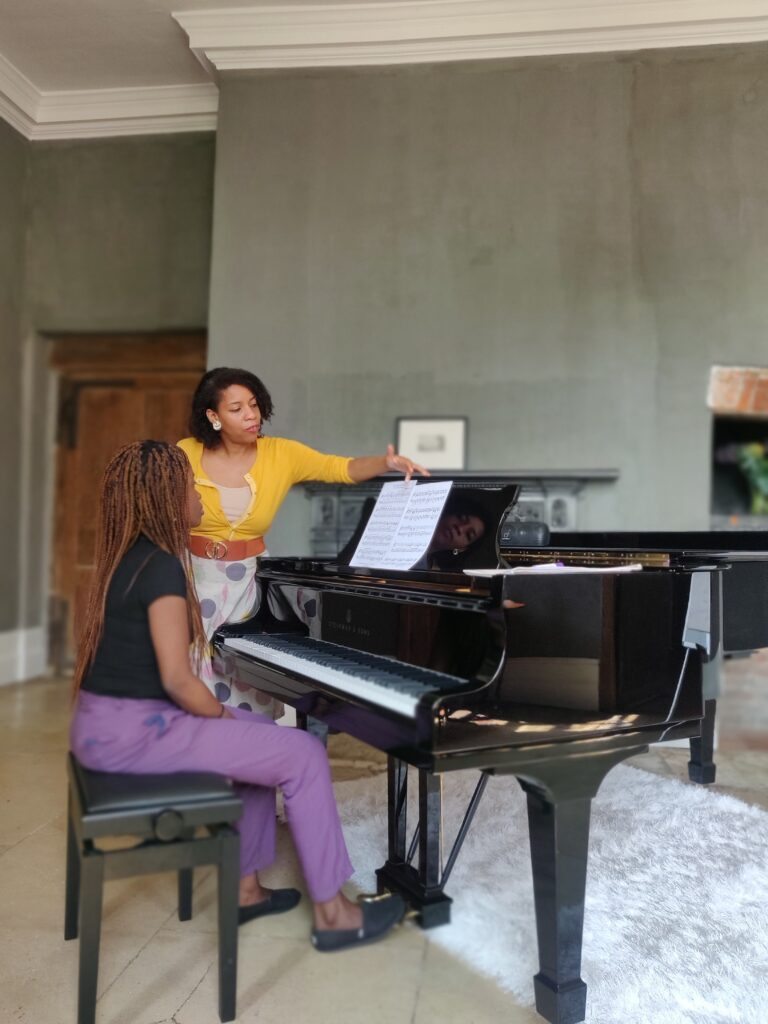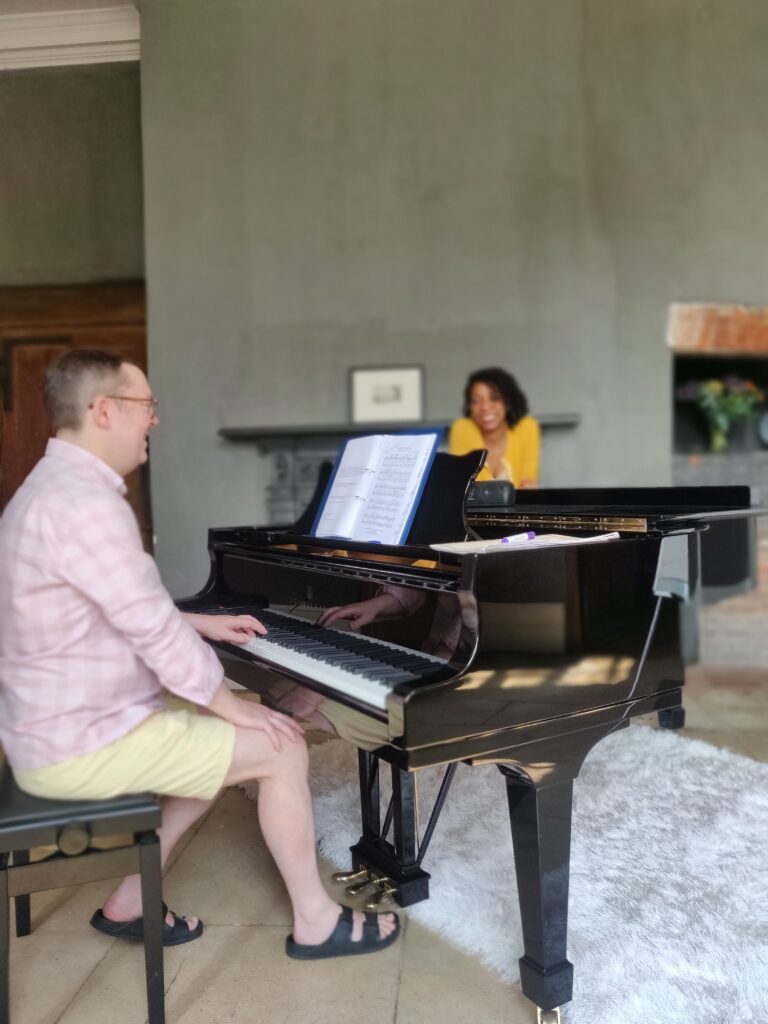What a treat it’s been having Beatrice Nicholas with us this weekend! Running a course on the American Civil Rights Movement and Black Renaissance Music, we have been given a wonderful insight into the melting pot of musical and creative influences of 1930s-50s Chicago. Exploring the work of Florence Price, Margarets Bonds and Betty Jackson, we have studied jazz influences, style and techniques within these wonderful classical composers’ music, as well as the inspiration of spiritual song in Black Renaissance piano music.
Jazz influences, style and technique
Using Margaret Bonds’ piece Valley of Bones as an example, Beatrice introduced the group to various jazz terminology and techniques to help them analyse the composition. Based on the negro spiritual song Dry Bones, it begins in its original, simple form and develops in texture and complexity with influences of blues, gospel and swing.
Students had a go at playing the minor blues and pentatonic scales, then combined them as Bonds does to improvise a melody on them. Having experimented with the freedom of “noodling”, guests then learned a bass riff, soprano call and improvised alto response from a passage of the score, committing it to memory.
The fun really started, when the group took a part each on the Steinway, rotating carousel-style, moving up a part when asked, and then running round the piano at the end of the performance line to begin back at the bass part! This helped us understand the importance of the stylistic freedom required when playing jazz, even if notated – and caused a lot of laughter in the process!
Putting it into action
Afternoons were spent performing to the group pieces from Beatrice’s list of suggested repertoire. Everyone had conveniently prepared something different, so it provided a lot of material to analyse and learn from. Watching and listening to each other playing was a great way to consolidate the mornings’ learning.
Saturday recital-talk
Beatrice gave a fascinating and moving recital-talk on the background of Florence Price, Betty Jackson-King and Margaret Bonds, weaving into her presentation significant moments in the civil rights movement and its relationship with culture and music. It was a very special evening hearing her play the music so freely and masterfully – and in such an intimate relaxed setting!
Spiritual song in Black Renaissance music
Warming us up with some group singing of Joshua fit the battle of Jericho to connect with our singing style, Sunday morning was spent understanding the fundamental, strong connection of this weekend’s music to negro spiritual song.
We spent time listening to and analysing various performances, including the inimitable gospel singer Mahalia Jackson. Bonds’ Valley of Bones originated from the spiritual Dry Bones. She set it as a Lied in her song cycle the Five Creek-Freedman Spirituals, later adapting it for piano to become Valley of Bones. Beatrice stressed the necessity of understanding the musical styles and cultural background that feed into the music to deliver it well.
We first analysed Wade in the water, pinpointing musical devices such as:
- Soloist call and choir/ group response
- Repetition
- Riffs
- Swung rhythms
- Blue notes and note bending
- Humming as an emotive effect
We then listened to and analysed the fantastic performance of Dry Bones by Jayme Alilaw, adding lyrics to the score.
Lastly, Beatrice encouraged us up to first play, then sing and play – noticing how the singing style affected our use of rubato and rhythmic freedom to imply vocal techniques such as note bending that a pianist can’t produce and loosening up the swung rhythms. A less immediate, less forceful placement of a chord, produced a softer tone, imitating an echo or hum.
And then it was a wrap! The conversations around the workshops, performance classes and lessons were equally rich and engaging, accompanied by Harriet’s homemade biscuits and cakes, Natalia’s lovely breakfasts, and Mark’s delicious lunches and dinner. What a wonderful time we had – and now equipped to go and continue our research, practise and learn as we go – exploring this genre of music further, independently.

